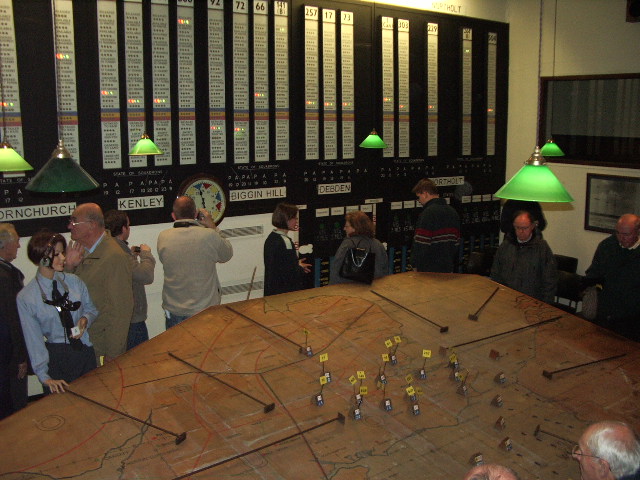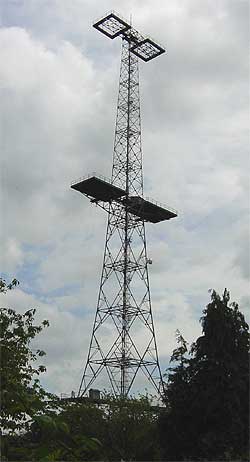Over at The Register, Gareth Corfield lists some of the advanced technological kit the Royal Air Force had access to during the Battle of Britain in 1940:

Restored Battle of Britain operations room in an underground bunker at former RAF station Uxbridge.
Photo by Ian Mansfield via Wikimedia Commons.
Technology played its part, mostly behind the scenes – yes, we mean the backroom boffins – in equipping Britain to hold firm and defeat the Germans. As today’s commemorations focus on the pilots and ground crew who saw off the Luftwaffe, spare a thought for the technologists whose efforts also saved the western world.
Radar and radio
Chief among the technological innovations that gave the RAF the edge was radar. In the 1930s Britain was one of the world leaders in radar (thanks in part to a bizarre and unsuccessful experiment to kill sheep with a death ray) leading to the building of radar stations all around the British coast.
Sir Robert Watson-Watt, today regarded as the father of radar, was instrumental in devising a method of bouncing radio waves off a flying aeroplane to figure out its location. He turned that 1935 concept into the fully operational Chain Home and Chain Home Low air defence networks inside four years.
Without radar, the RAF was totally reliant on humans with binoculars spotting incoming formations of German bombers; radar gave the air force an early warning capability as hostile aircraft formed up over France before crossing the Channel.
Before radar came radio direction-finding. The RAF’s Home Defence Units were first established in the 1920s and mastered the art of pinpointing an aeroplane’s location from radio transmissions made by its pilots. Though less high profile than radar, the HDUs’ activities allowed the RAF to “see” beyond the range of radar as Luftwaffe bomber formations, transmitting to each other over France, formed up ready for a raid over British soil.
Signals intelligence and compsci
Not far behind radar was the crucial role of what was then the Government Communications and Cipher School (GC&CS), based at Bletchley Park. Today the site is home to the National Museum of Computing but in the dark days of the 1940s it was where codebreakers deciphered German military communications.
Breaking Nazi Germany’s encryption was a vast task, and in the days before computers extremely labour intensive; between 9,000 and 12,000 personnel worked at Bletchley during the Second World War. The demands of RAF and other military commanders for speedy decryption of enemy messages directly contributed to the development of early computer science; Alan Turing worked at Bletchley Park, helping devise improvements to electromechanical crypto-breaking machines that resulted in the Bombe, a very early computer.




